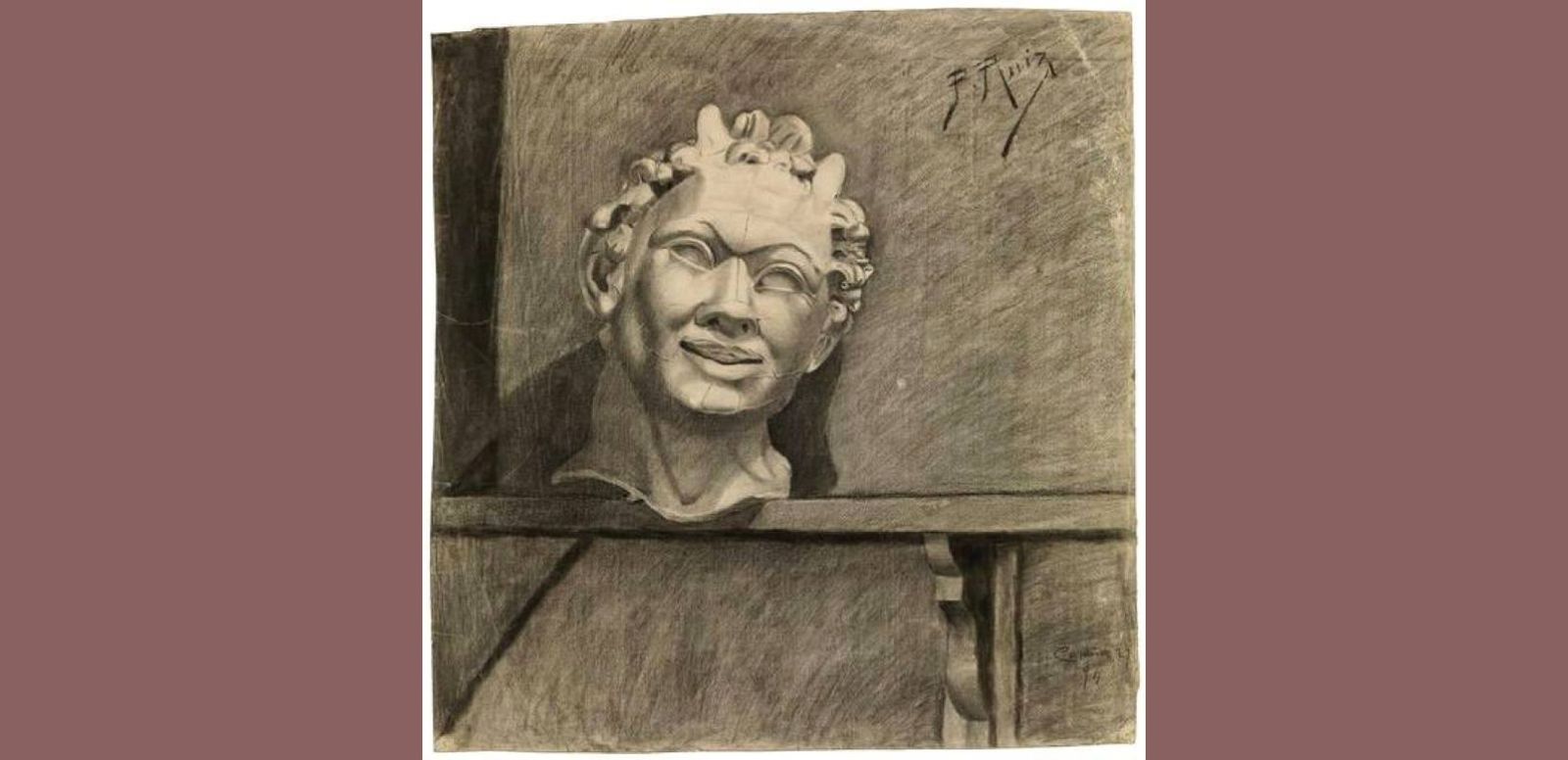
Museu Picasso, Barcelona. Donación Pablo Picasso, 1970. MPB 110.875
Museu Picasso, Barcelona. Fotografía: Fotogasull.
© Sucesión Pablo Picasso, VEGAP, Madrid, 2023
Tuesday to Friday from 10 a.m. to 8 p.m.
Saturdays from 10 a.m. to 2 p.m. and from 4:30 p.m. to 8 p.m.
Sundays from 10 a.m. to 2 p.m.
Monday and holidays closed
The exhibition explores the relationship between the Malaga-born artist and his time in A Coruña and includes a selection of 120 pieces. Each work is related to the narrative discourse of the exhibition and to the artist's formative period during his years in the city. Picasso blanco en el recuerdo azul links to the artist's poem composed in 1935, whose verses refer to the colors blue and white, which represent "the identity of A Coruña".
The artist lived in A Coruña for five years, between 1891 and 1895, and it is where he began his academic training. This period was initially analyzed during the exhibition El primer Picasso. A Coruña 2015 and now this new collection of works provides a more faithful representation of Picasso's time in A Coruña, as it reveals a new creative perspective of the author.
The exhibition is divided into ten periods that cover all the stages of the artist's production. For each of these chapters, at least one masterpiece was chosen that relates to one or others of his formative period in Galicia. Each of them analyzes the iconographic variables, the concepts or the dimension of many of his ideas and experiences with visual language.
As part of the collection, the work L'Aumone (The Charity), a drawing made in 1898 from a private collection, will be exhibited for the first time. Also on display will be Picasso's landscape period, in which A Coruña was very present and he painted the waves of the Orzán beach.
The commissioner for the commemoration of the 50th anniversary of Picasso's death, Carlos Alberdi, stressed at the press conference: "The activities of the Picasso Year, the whole commemoration, are a Franco-Spanish event. Without the determined impulse of the French authorities and the lending capacity of the National Museum Picasso Paris the celebration, as it is designed, would not have been possible".
For his part, the Regional Minister of Culture, Education, Vocational Training and Universities of the Xunta de Galicia, Román Rodríguez, recalled that "from the Xunta de Galicia we vindicate the Galician influence in the artist's career through more than 100 pieces, many of them representative of his training period in A Coruña and of his stage of maturity and consecration".
This new exhibition, promoted by the Xunta de Galicia and curated by Antón Castro, Malén Gual and Rubén Ventureira, consists of 120 pieces from 35 international and national lenders from private collectors or institutions such as the Museu Picasso in Barcelona, the Almine and Bernard Ruiz-Picasso Foundation for Art (FABA), National Picasso Museum in Paris, Museo Picasso de Antibes, Museo Reina Sofía, Museo Casa Natal de Picasso de Málaga, ABANCA, Escola de Arte e Superior de Deseño Pablo Picasso de A Coruña, Diputación de A Coruña, Fundación Camilo José Cela, Fundación Museo do Gravado e a estampa de Artes de Ribeira, Real Academia de Bellas Artes de San Fernando, Museo Picasso de Málaga and Museo de la Universidad de Navarra.
The exhibition is part of the project called Picasso Celebration 1973-2023, a program of more than fifty exhibitions and events that will commemorate the 50th anniversary of Pablo Picasso's death and will take place between 2022 and throughout 2023 at renowned cultural institutions in Europe and the United States.
PICASSO CELEBRATION 1973-2023
April 8, 2023 marks the fiftieth anniversary of the death of Spanish artist Pablo Picasso, an event that will mark the celebration of his work and artistic legacy in France, Spain and internationally.
On this occasion, the governments of France and Spain have agreed to work together on a program of international scope through a bi-national commission that brings together the cultural and diplomatic administrations of the two countries.
With the backing of renowned cultural institutions in Europe and the United States, the Picasso Celebration 1973-2023 revolves around some fifty exhibitions and events that, as a whole, address a historiographical analysis of Picasso's work.
Born in Malaga on October 25, 1881, and died in the French town of Mougins on April 8, 1973, Pablo Picasso is one of the most celebrated painters in the history of Western art. His expressive, free and multiform language continues to influence contemporary art and reflection.
The Picasso Celebration 1973-2023 aims to highlight the trajectory of an essentially European artist who, from a profound knowledge of the heritage and principles of tradition and an understanding of classicism as an ethical value, projected internationally such universal symbols as Guernica, today a collective emblem in the defense of human rights.
The program is organized by the Spanish National Commission for the Commemoration of the 50th anniversary of the death of Pablo Picasso and the Musée national Picasso-Paris, with the support in Spain of Telefónica.
MUSEUM OF FINE ARTS OF A CORUÑA
The Museo de Belas Artes de A Coruña is a state-owned museum whose management has been transferred to the Conselleria de Cultura, Educación, Formación Profesional e Universidades of the Xunta de Galicia. Its current headquarters is the result of a project designed by the architect Manuel Gallego Jorreto. It was inaugurated in 1995 and was awarded the 1997 National Architecture Prize. The Museum of Fine Arts of A Coruña houses a permanent collection that reflects the evolution of art from the 15th century to the present. A journey through pieces ranging from painting, sculpture, drawing and engraving to decorative arts and archeology, among which predominate those of the seventeenth and nineteenth centuries, and the Galician plastic arts of the twentieth century. Currently, it hosts activities designed for different audiences, adapting to the requirements to act as a bridge between the art world and society.

